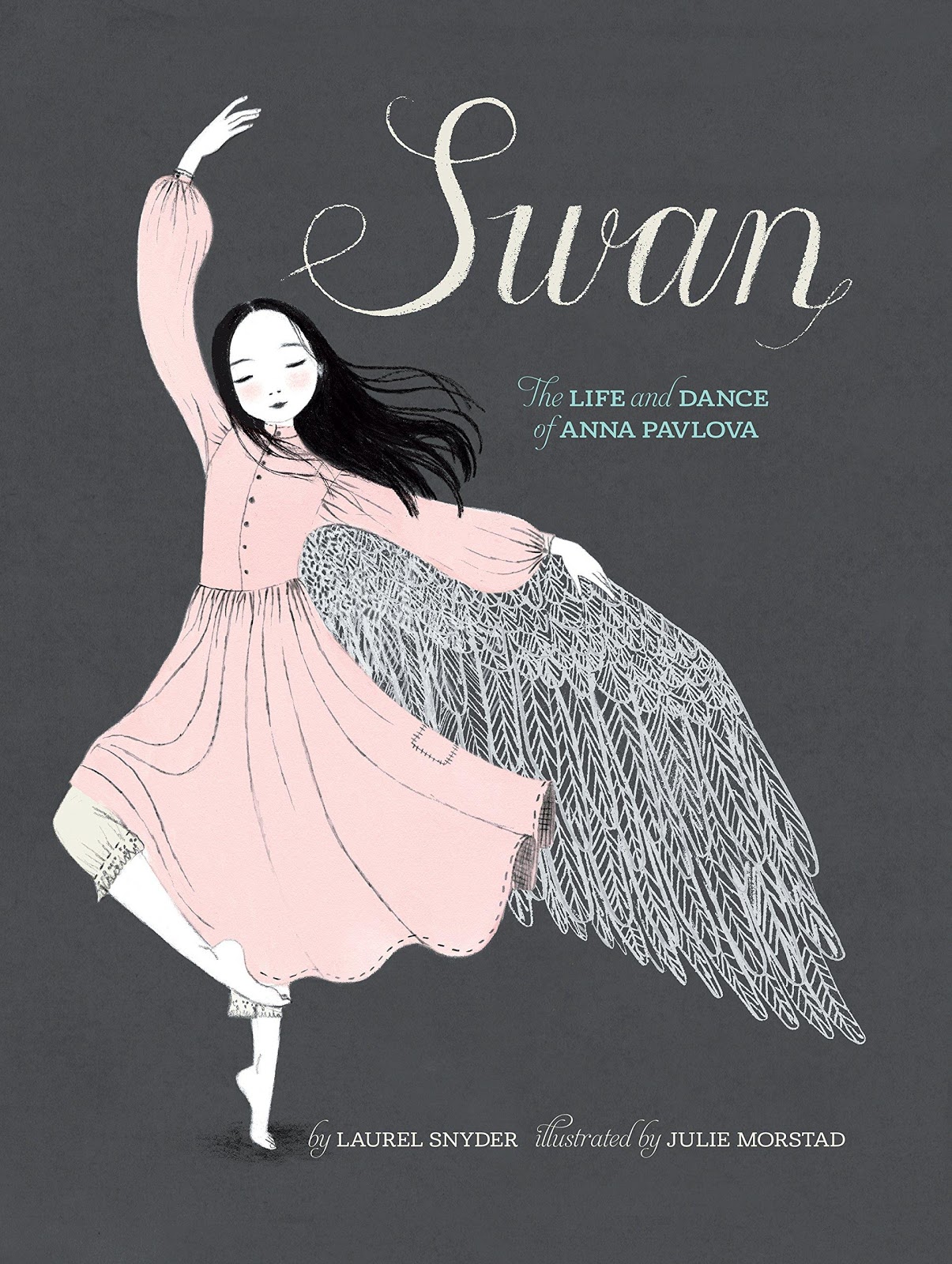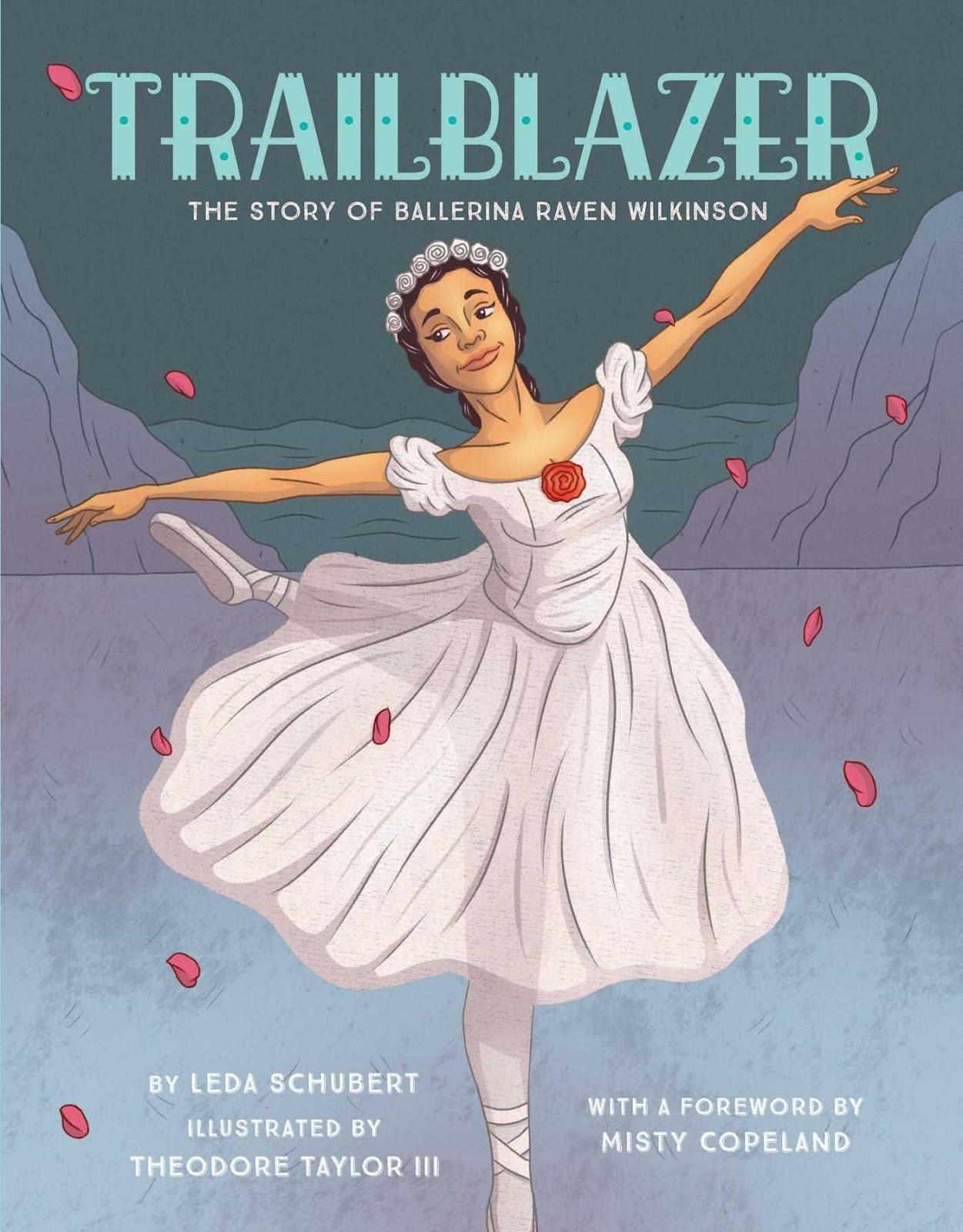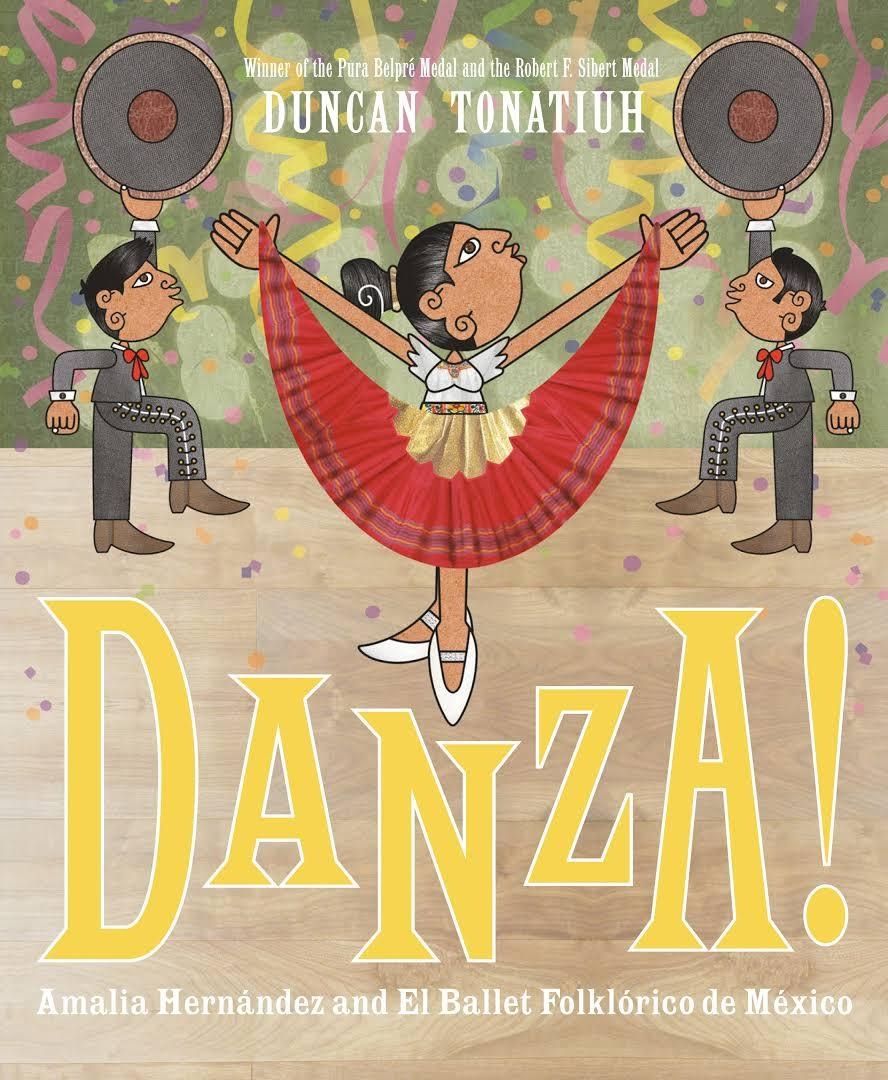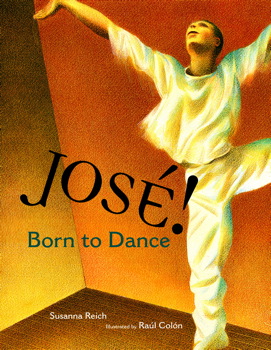Celeste Trimble, St. Martin’s University, Lacey, WA
 There are countless forms of dance around the world. Ceremonial dance, liturgical dance, social dance, performance dance, and all the countless variations within. For this look at biographical picturebooks of dancers, I look specifically at dancers who have practiced ballet, and some who have moved through ballet to other forms.
There are countless forms of dance around the world. Ceremonial dance, liturgical dance, social dance, performance dance, and all the countless variations within. For this look at biographical picturebooks of dancers, I look specifically at dancers who have practiced ballet, and some who have moved through ballet to other forms.
In my Arts and Movement in Education course for preservice teachers, we participate in the artforms that we study. Students are eager to paint and write creatively, to explore an instrument, even to participate in improv games. However, many students are incredibly reluctant to dance in any form in this classroom setting. Perhaps there is an idea that experimentation is not permitted in dance in the same way that they feel they can pick up a drum and bang on it for awhile without any formal training. Perhaps the notion of dance as performance clouds their ability to access the element of play in creative movement. Perhaps there are memories of middle school social dances gone awry. Whatever the reason, this hesitance makes me extra eager to share the stories of dancers within the classroom.
Swan: The Life and Dance of Anna Pavlova by Laurel Snyder, illustrated by Julie Morstad, makes me think of my grandmother. She was a ballerina as well as a creative storyteller, and would tell me about the dancers she admired. Anna Pavlova was at the top of the list. The beginning of this picturebook tells of the moment when Anna first experiences sitting in the audience during the performance of the ballet Sleeping Beauty on a snowy evening in Russia. The illustrations beautifully capture Anna’s feeling of a “song, suddenly, inside her.” She dances around their small apartment, hanging laundry, sweeping up, until she is old enough to take classes. Her gifts shine. Although her career takes her beyond her childhood poverty into champagne luxury, she remembers being a girl and wanting nothing more than to dance. Anna becomes an ambassador for ballet, believing that everyone should have the opportunity to dance. The poetry of the words and images together, the back matter that further examines the life of Anna Pavlova, and the feeling throughout that dance is an artform to admire, to experience, and to advocate for, makes this lovely text the perfect jumping off point for a look at dancer’s biographies.

Trailblazer: The Story of Ballerina Raven Wilkinson also begins with an image of a young girl sitting in a theater seat, watching and being inspired by the ballet before her. Raven Wilkinson was born in New York City in 1935, five years after the death of Anna Pavlova. Watching the Ballet Russes, the company in which Pavlova danced, and later Wilkinson as well, Wilkinson knew there had never been a Black ballerina in a major touring group from the United States. The focus of this picturebook is not solely on Raven’s growth as a dancer, but on her struggle with racial injustice in society, even though the Ballet Russes was portrayed as being integrated and equitable. I was fascinated to learn that Wilkinson left the Ballet Russes after six years to enter a convent, but returned five years later to dance for the Dutch National Ballet. One of my favorite aspects of this picturebook are the foreword by Misty Copeland and the afterword by Raven Wilkinson. Copeland, who is perhaps more well known as a Black ballerina who broke down professional barriers, writes about being inspired by Wilkinson. There is a photo, and an illustration of the photo, of a moment in which Wilkinson brings flowers to Copeland after Copeland performed the roles of the White and Black swans in the ballet Swan Lake. It is marvelous to see how an artform can evolve throughout a century.

Danza: Amalia Hernández and El Ballet Folklórico de México by Duncan Tonatiuh also references a dance heritage connection to Anna Pavlova. Hernández, born in 1917 in Mexico City, was inspired not by a theatrical dance performance, but by watching a pair of traditional dancers in a town square while she was on vacation with her family. When she began dancing lessons, however, she studied with a ballerina who had danced with Pavlova in Russia. Then, after being inspired by modern dancers, she continued ballet but also studied modern. Then, in 1952, she choreographed a dance that was based on traditional dances from Michoacán. This was a turning point for Hernández, as she then began to focus her dancing and choreography on folklorico, traditional dances from different regions of Mexico. In the back matter, there is mention that some criticized her for appropriation and misrepresentation of Indigenous Mexican dance forms. It is clear, however, that Tonatiuh celebrates Hernández, her dance, her choreography, and the dance company she began, El Ballet Folklórico de México. I love seeing how she moved through various European dance forms to local Indigenous dance forms, and how her appreciation of these dances helped so many others follow suit, because of her dance school and her local and global performances.

José! Born to Dance, a picturebook by Susanna Reich, illustrated by Raúl Colón, tells the story of José Limón. Limón Was born in Culiacán, Mexico, in 1908. His father was a musician in a theater, and Limón had many experiences watching flamenco dancers, ballet dancers, and others. Even though he felt very inspired by the bull fights he had seen, he imagined he would grow up to be a visual artist. His family immigrated to the United States during the Mexican Revolution, living briefly in Tucson, Arizona before settling in Los Angeles, California. After moving to New York City to pursue this dream, he encountered a dance performance that would change his life. He took his first dance class and after only six weeks, danced in his first performance. I love the way this text highlights Limón’s journey to get to dance, as most other dancer’s biographies highlight the moment in childhood when it became obvious to the child that dance was going to be their life long passion and profession. It is not always this way, as it takes many of us until adulthood to figure out where our passions and talents lie.
These four books give the reader a glimpse into the life of a classically trained dancer, beginning with ballet and then, perhaps, moving onto other dance forms. I had hoped to find a greater variety of picturebook biographies of dancers, especially those who were not ballet dancers to begin with, dances like Flamenco, Hip Hop, Irish Dance, Tango. For a child already starry eyed about the ballet, these books will surely delight, rich with images of jumps and theaters, backstage, studios. Additionally, books about Janet Collins, Misty Copeland, Robert Battle will complement these books, as well. I hope that someday there is a book about Osage ballerina Maria Tallchief that highlights her accomplishments from a distinctly Indigenous viewpoint rather than through a colonial lens (Tallchief: American’s Prima Ballerina by Maria Tallchief and Rosemary Wells, illustrated by Gary Kelley feels this way despite Tallchief’s participation in the book). Her story is an important one to add to this list of globally important dancers.
Even in a class of hesitant dancers, we can bring dance into the classroom through picturebook biographies of remarkable change agents of dance.
Journey through Worlds of Words during our open reading hours: Monday-Friday, 9 a.m. to 5 p.m. and Saturday, 9 a.m. to 1 p.m. To view our complete offerings of WOW Currents, please visit its archival stream.
- Themes: Celeste Trimble, Danza: Amalia Hernández and El Ballet Folklórico de México, Duncan Tonatiuh, José! Born to Dance, Julie Morstad, Laurel Snyder, Raul Colon, Susanna Reich, Swan: The Life and Dance of Anna Pavlova, Trailblazer: The Story of Ballerina Raven Wilkinson
- Descriptors: Books & Resources, WOW Currents
